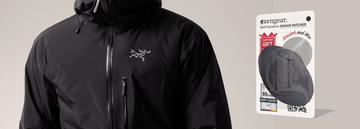Enhance Performance and Recovery: 6 Incredible Benefits of Foam Roller for Runners
by Emily Jannet on Apr 10, 2024
As runners, we constantly push our bodies to the limit, seeking improvement and endurance. However, the repetitive nature of running can lead to tight muscles, imbalances, and potential injuries. This is where foam rolling emerges as a game-changer. By incorporating foam rolling exercises into your routine, you can alleviate muscle tension, enhance flexibility, and expedite recovery.
Understanding Foam Rolling
What is Foam Rolling?
Foam rolling, also known as self-myofascial release, involves using a foam cylinder to apply pressure to specific points on your body. This practice targets the fascia, a connective tissue that surrounds muscles, helping to release tension and promote blood flow.
How Does Foam Rolling Work?
When you roll over tight or sore muscles with a foam roller, you're essentially giving yourself a deep tissue massage. This process helps break up adhesions and knots in the muscle tissue, improving range of motion and reducing discomfort.
The Benefits of Foam Roller for Runners
Enhances Flexibility
One of the key benefits of foam rolling for runners is its ability to enhance flexibility. By loosening tight muscles and increasing blood flow to the tissues, foam rolling can help improve your range of motion, allowing for more fluid and efficient movement while running.
Speeds Up Recovery
After a grueling run, your muscles need time to recover and repair. Foam rolling aids in this process by reducing muscle soreness and stiffness. By increasing circulation and oxygen flow to the muscles, foam rolling can expedite recovery, allowing you to bounce back faster and tackle your next run with ease.
Prevents Injury
Injury prevention is paramount for runners, and foam rolling plays a crucial role in keeping injuries at bay. By addressing tightness and imbalances in the muscles, foam rolling helps reduce the risk of strains, sprains, and other common running injuries.
Improves Performance
Foam rolling isn't just about recovery—it can also enhance your performance on the track or trail. By optimizing muscle function and improving mobility, foam rolling allows you to run more efficiently, exerting less effort while achieving greater speed and endurance.
Relieves Muscle Tension
Running can take a toll on your muscles, leading to tightness and discomfort. Foam rolling provides relief by targeting trigger points and releasing tension in the muscles. This can help alleviate post-run soreness and promote relaxation throughout your body.
Boosts Circulation
Proper blood flow is essential for muscle recovery and overall health. Foam rolling stimulates circulation, delivering oxygen and nutrients to the muscles while flushing out toxins and metabolic waste. This increased blood flow can enhance recovery and promote optimal performance.
Frequently Asked Questions (FAQs)
- Is foam rolling painful?
Foam rolling may cause some discomfort, especially if you're targeting tight or sensitive areas. However, the benefits outweigh the temporary discomfort, and many runners find that the sensation becomes more tolerable over time.
- How often should I foam roll?
It's recommended to foam roll regularly, ideally before and after each run. Incorporating foam rolling into your warm-up and cool-down routines can help prepare your muscles for activity and promote recovery afterward.
- Can foam rolling replace stretching?
While foam rolling is a valuable tool for improving flexibility and reducing muscle tension, it shouldn't completely replace traditional stretching exercises. Combining foam rolling with dynamic and static stretches can provide comprehensive benefits for runners.
- Can I foam roll if I'm injured?
If you're dealing with a specific injury or medical condition, it's important to consult with a healthcare professional before incorporating foam rolling into your routine. While foam rolling can be beneficial for many injuries, it's essential to ensure that you're using proper technique and not exacerbating any existing issues.
- How long should I foam roll each muscle group?
There's no set rule for how long you should foam roll each muscle group, but aim for at least 1-2 minutes per area. Focus on slow, controlled movements, and pay attention to any areas of tightness or discomfort.
- Can I use a foam roller on my lower back?
Foam rolling the lower back can be beneficial for relieving tension and discomfort, but it's essential to use caution and proper technique. Avoid rolling directly on the spine and focus on the muscles surrounding the spine, such as the erector spinae and latissimus dorsi.
In conclusion, foam rolling is a highly effective tool for runners looking to optimize their performance and recovery. By incorporating foam rolling into your routine, you can enhance flexibility, speed up recovery, prevent injuries, and improve overall running performance. So, next time you hit the pavement, don't forget to grab your foam roller and unlock the countless benefits it has to offer.





